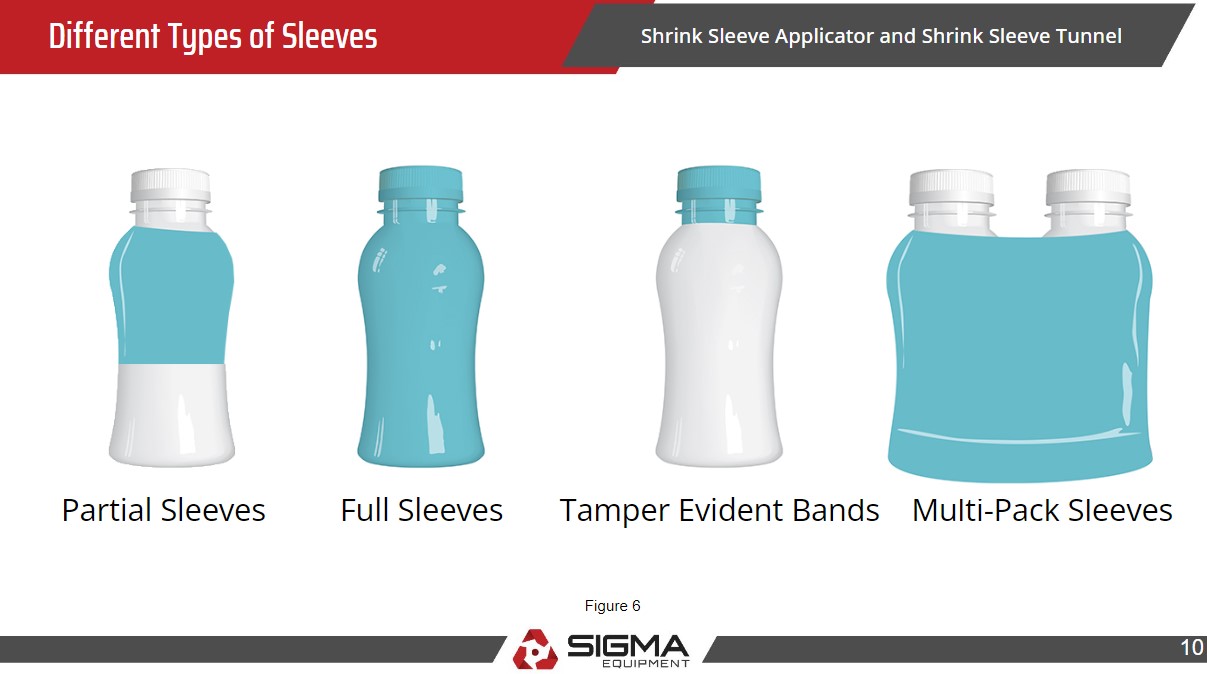An Overview into Shrink Sleeve Applicators and Shrink Sleeve Heat Tunnels
Flexible Labeling Solutions for Uniquely Shaped Containers
Shrink sleeve applicators and heat tunnels provide a competitive advantage to manufacturers with uniquely shaped containers or frequently run different products. These machines simplify the label application process while enhancing the visibility of your product and ensuring product safety through tamper-evident seals. Shrink sleeve applicators utilize durable labels with graphics printed on the reverse side of the film, protecting it from scuffs and damage during shipping.
In this article, we’ll go over the following:
- Define the type of equipment
- Where to find in a production line
- Favored Manufacturers
- Benefits and Features
- Industries used in
- Summary
What are shrink sleeve applicators?
This type of equipment applies a sleeve of film around a product, which is then shrink-wrapped by a heat or steam tunnel.
Shrink sleeve applicators are useful when your container design has changed. They are versatile machines when it comes to different-shaped containers because they can conform to many shapes.
[Source: AFM - American Film & Machinery]
What are shrink sleeve heat tunnels?
Once a sleeve of film is dropped around your container, it’s conveyed into the shrink sleeve heat tunnel. Inside the tunnel, the heat causes the film to shrink, conforming to the container’s shape. These tunnels either use electricity or heat or steam.
[Source: Scaligera Packaging SRL]
Standard Heat Tunnel vs. Steam Tunnel
A steam tunnel is the most favorable equipment to follow a shrink sleeve applicator compared to basic electric heat.
Water transfers heat about 20 times faster than standard air.
However, you’ll want to be cautious when running plastic products through a heat tunnel. If a plastic bottle gets too much heat, it could melt - ruining your product.
While steam tunnels offer the most evenly finished result, the installation and required resources can result in an elaborate setup.
Before purchasing a steam tunnel, be sure you have a boiler, condensate drains and venting for the steam.
Benefits & Features
A shrink sleeve applicator has many benefits.
Branding
There is more surface area covered by a shrink sleeve, leaving you with more room for marketing and education content.
Flexibility
Using blank containers eliminates the need to inventory printed containers and saves money for the producer by being able to change what a product looks like for seasonal changes, promotions or new products.
Tamper Evidence
Provides customers with the reassurance that the product they have purchased is safe.
Durability
Labels are reversed-printed with a clear film, sealing the ink from the outside to eliminate scuffs and damage during transportation.
Sustainability
Shrink sleeves can be easily removed for recycling since there are zero adhesives.

[Source: AXON]
Upstream & Downstream Equipment
Upstream
- Orienter
- Labeler
- Filler
- Capper
Downstream
- Coder
[Source: TINGS]
Preferred Manufacturers
- Axon
- American Film & Machinery
- Accutek
- Accraply
- Quadrel
- Tripack
Industries used in
- Beverage
- Household Goods
- Pharmaceutical
- Automotive
- Cosmetic
- Food
Summary
Shrink sleeve applicators and shrink sleeve tunnels are ideal for oddly shaped containers and offer several benefits - including more area for branding and tamper evidence for food safety. They are also sustainable and suitable for various industries.
Click here to view our section of shrink sleeve equipment.
To purchase a shrink sleeve applicator and shrink sleeve tunnel, contact our sales team by clicking the button below.
